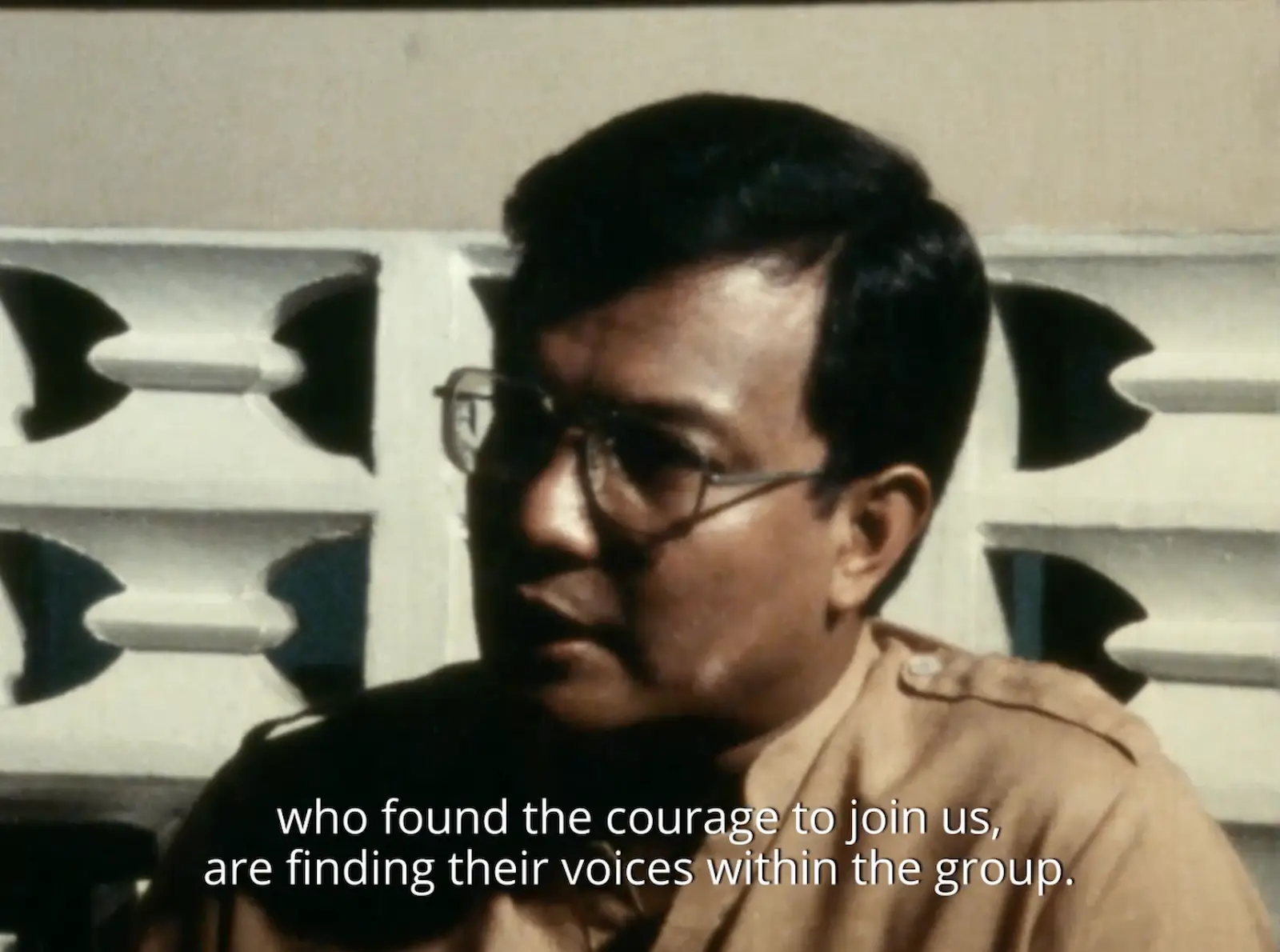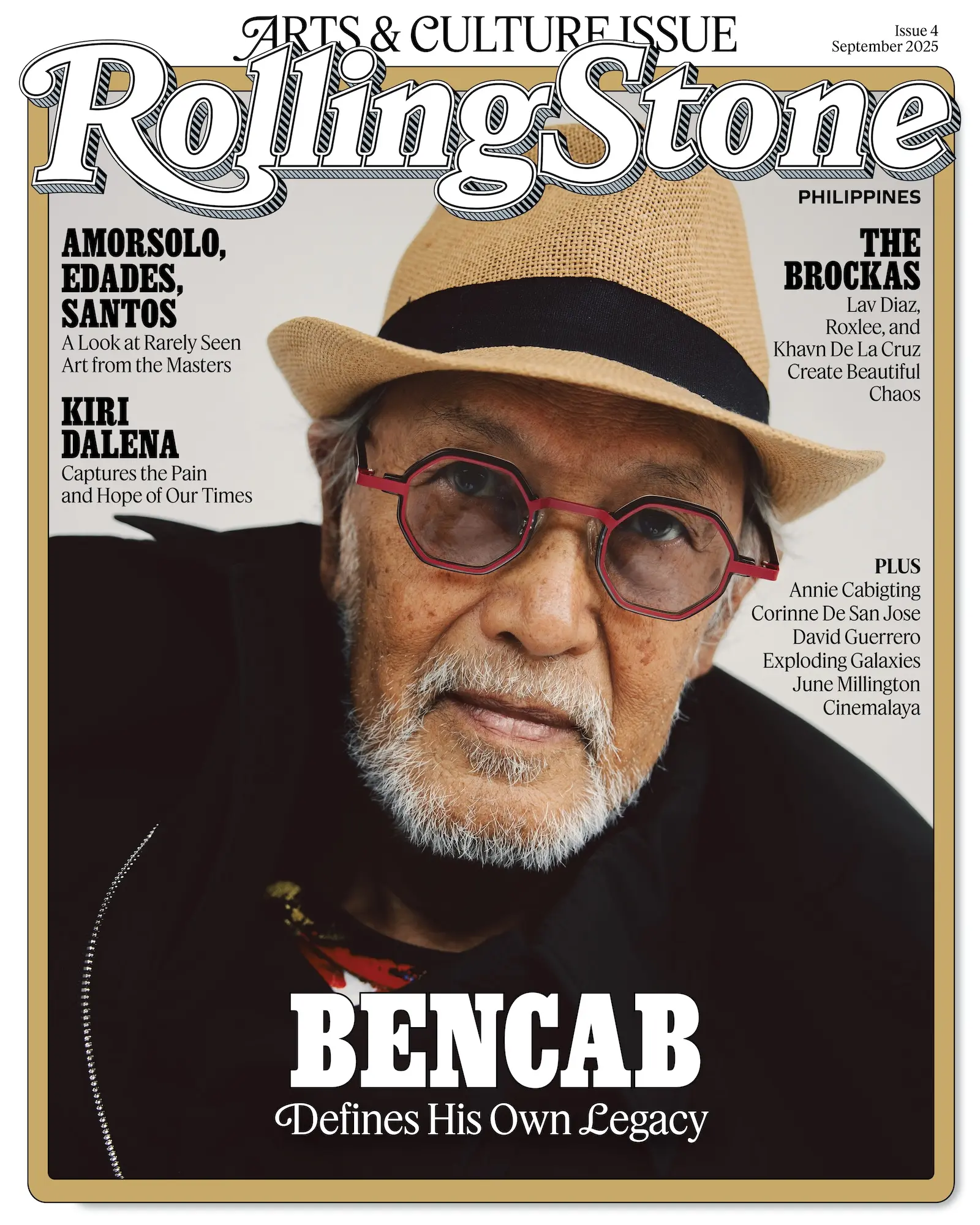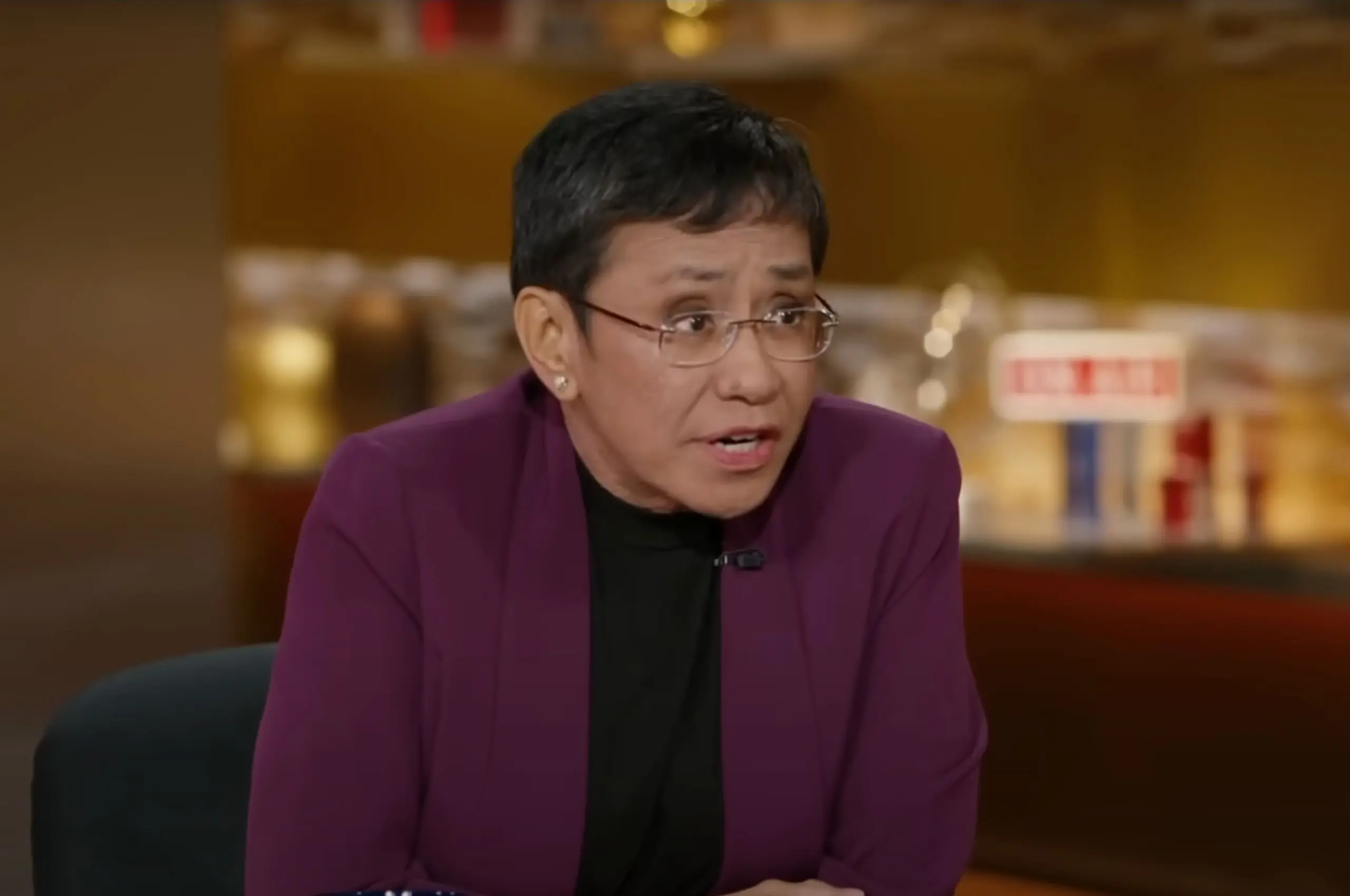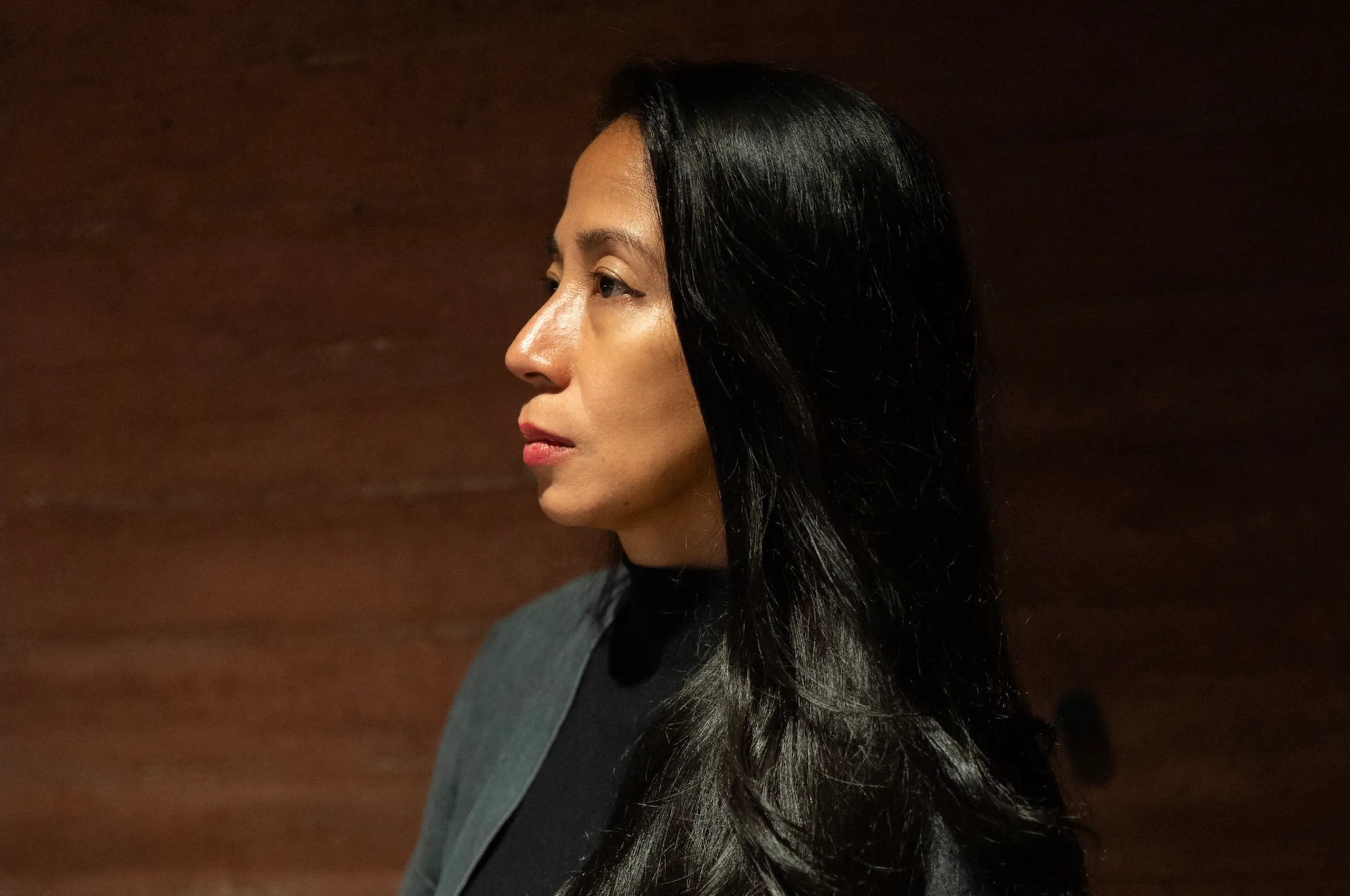On this year’s People Power Revolution Day, I walked along EDSA in search of a friend I was meant to meet. Thousands of people were already gathering and preparing for a mobilization commemorating the 39th anniversary of the uprising. The demonstration also protested President Ferdinand “Bongbong” Marcos Jr., who had revoked the date’s status as a national holiday in 2023, but in 2025 granted it “special working day” status. Many consider this move an act of historical erasure: it undermines the peaceful democratic movement that unseated Ferdinand Marcos Sr.’s dictatorial rule in 1986. Marcos Jr.’s semi-reinstatement of the holiday seems like an effort to placate the public, but those willing and able gathered on the historic street in defiance of Marcos Jr.’s ongoing efforts to rehabilitate his family’s image.
That morning, however, I quickly realized the futility of my hunt for this friend. Instead, I began to look at the banners, knowing I’d eventually find the Concerned Artists of the Philippines or CAP, who would offer camaraderie and safety. CAP is the country’s leading cultural organization. It comprises members from different cultural sectors, including music, visual arts, theatre, dance, literature, print, media, film, radio, and TV. Their logo, which I finally spotted on a white flag waving above the crowds, remains unchanged from 1984 when it was designed by social realist painter Edgar Talusan Fernandez. According to its declaration of principles, CAP emphasises art’s social responsibility, the protection of free speech, and the advocacy of and solidarity with various labor sectors.
If, during the Marcoses’ conjugal dictatorship, the pair were determined to establish a fallacious sense of reality through delusions of grandeur, artists who opposed the regime were determined to use their art to illustrate the realistic conditions of their country.
National Artist and director Lino Brocka founded CAP in 1983 as the Free the Artist Free the Media Movement in response to Marcos Sr.’s Executive Order No. 868 (later E.O. 876). The mandate would change the Board of Censors to the Board of Review for Motion Pictures and Television, and expand its powers such that the Marcos-appointed committee had the power to censor media for, and not limited to, inciting “subversion, insurrection or rebellion against the State,” or “undermine the faith and confidence of the people in their government.” The board was granted regulatory abilities that not only determined what was shown, but also where and how. The Free the Artist Free the Media Movement took out an ad in Bulletin Today that February, condemning the act with signatures of nearly 500 cultural workers, including Nick Joaquin, Bien Lumbera, Pete Lacaba, Jo-Ann Maglipon, Sylvia Mayuga, Nic Tiongson, Alice Reyes, Santiago Bose, and Ray Albano. Then-First Lady Imelda Marcos’s ironic words headline the page: “Freedom is basic for creativity.” Shortly thereafter, these artists gathered at Liwasang Bonifacio to express their defiance against modes of censorship. In the book, Martial Law Melodrama: Lino Brocka’s Cinema Politics, José B. Capino wrote that the movement “successfully lobbied to eliminate the most egregious features of the proposed decree.”

Much like journalism, art in its various mediums could expose the Marcos regime’s corruption and fascism as vehicles for truth-telling. Marcos Sr. was keenly aware of the importance of controlling information, knowledge, and media. In 1972, after the declaration of martial law, the First Letter of Instruction requisitioned all media outlets and placed information under state control. Imelda Marcos, meanwhile, understood the crucial role of culture in cultivating power and sank billions of pesos into initiatives like the Cultural Center of the Philippines and Manila Film Center (a construction disaster that saw 168 people killed due to the administration’s dangerously expedited schedule). Her commitment to “the true, the good, and the beautiful” manifested in a crass obsession with luxury, opulence, and wealth that fostered a superficial image of the Philippines that directly opposed the realities of the country. This “edifice complex” — a term coined by CAP founding member, activist and cultural worker Behn Cervantes to describe the Marcoses’ propagandic efforts — demonstrates the conjugal dictator’s obsession with superficial image-making.
In the documentary Signed: Lino Brocka (1987), the director recalls the Marcos matriarch admonishing him for depicting Tondo in his internationally renowned films, Maynila, sa mga Kuko ng Liwanag (1975), Insiang (1976), Jaguar (1979), and Bona (1980). Brocka’s films rarely criticized the Marcos regime directly. Rather, they assumed a subversive form of “social melodrama” in which the director foregrounds the urban realities that emerged from political conditions. Insiang, for example, follows the titular character through her life in the Manila slums; the setting exacerbates the already brutal conditions of the narrative. When the Cannes Film Festival selected Insiang for a screening at the Director’s Fortnight section in 1978, the regime’s censors denied the international permit because the film’s portrayal of poverty failed to depict “a true image of the country.” Capino writes, “the persistence of slums — both on and off screen — undermined Imelda’s attempts to dazzle.”
The Free the Artist Free the Media Movement took out an ad in Bulletin Today that February, condemning the act with signatures of nearly 500 cultural workers, including Nick Joaquin, Bien Lumbera, Pete Lacaba, Jo-Ann Maglipon, Sylvia Mayuga, Nic Tiongson, Alice Reyes, Santiago Bose, and Ray Albano. Then-First Lady Imelda Marcos’s ironic words headline the page: “Freedom is basic for creativity.”
If, during the Marcoses’ conjugal dictatorship, the pair were determined to establish a fallacious sense of reality through delusions of grandeur, artists who opposed the regime were determined to use their art to illustrate the realistic conditions of their country by introducing methods of truth-telling such as neorealism and documentary. Following Ninoy Aquino’s assassination in 1983, CAP created a short video artwork called Signos (Omens). Directed by CAP founding member Mike De Leon, the film is a collaboration between the organization’s multidisciplinary constituency of filmmakers, artists, and journalists. The film begins with George Frideric Handel’s “Hallelujah” chorus over images of Imelda and Ferdinand Marcos Sr. in mock reverence, but soon cuts to clips of mass protest in the wake of Aquino’s murder. The 39-minute film includes interviews with key members from various sectors, including Jose W. Diokno, Joe Burgos, Letty Jimenez-Magsanoc, Ceres Doyo, Sister Christine Tan, Sister Mariani Dimaranan, Rene Saguisag, Ka Felicing Villados, Cardinal Jaime Sin, and Brocka. Clips of protest and voice-overs of Bertolt Brecht’s “To Those Born Later,” translated into Filipino by CAP founding member Jose “Pete” F. Lacaba, punctuate these accounts to emphasize the solidarity among cultural workers, as well as the stakes for the future. At a time of censorship, violence, and uncertainty, this Super 8mm short illustrated the possibility of collaborative artistic action. The synthesis of truth-telling and creative work within Signos contested the cultural propaganda perpetuated by state-sanctioned projects and institutions.
Read the rest of the story in the Arts and Culture issue of Rolling Stone Philippines. Pre-order a copy on Sari-Sari Shopping, or read the e-magazine now here.




